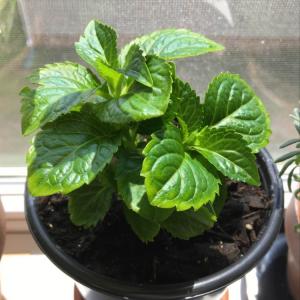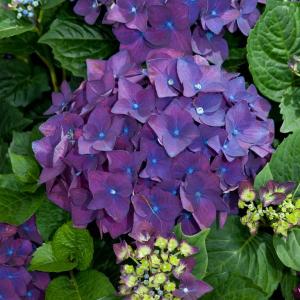文章
Dummer. ゛☀
2017年07月01日

Yanlaihong nickname
Yanlaihong aliases are leaf comb, old Johnson, small blue, hydrangea, Amaranthus tricolor, old young at heart.
The growth habit of yanlaihong
Amaranth is a relatively easy breeding of plants, which can resistant to drought, not too cold, love moist and light environment, the requirements of environmental ventilation. It has little demand for soil, and enjoys loose, fertile and well drained soil.
Yanlaihong breeding is generally planting and breeding, it can broadcast sowing, usually in April - June. Such seedlings grow to about 10cm long time, can the basin on the colonization.
In the growth period of yanlaihong, should pay attention to ventilation, do not use too much water, to avoid the phenomenon of excessive growth.
The ornamental value of yanlaihong
Yanlaihong ornamental is quite unique, it is a kind of foliage plants, can be used as flower flower cultivation for breeding. Or grow on lawns, along the road, and other plants to form a certain pattern.
Morphological character
Herbs annual. Stems erect, 15-45 cm tall, simple or branched, glandular hairs. Lower leaves opposite, upper leaves alternate, broadly ovate, oblong and lanceolate, 2-7.5 cm long, apex acute, base attenuate or half clasping, entire, hairy on leaf surface, without petiole.
Paniculate cymes terminal, pubescent, pedicel very short; calyx tubular, calyx lobes lanceolate subulate, 2-3 mm long, with pilose outside, the results carry out or bent; corolla salverform, 1-2 cm in diameter, pink, red, purple, white, yellow and other colors, rounded lobes shaped, slightly shorter than corolla tube; stamens and style is much shorter than corolla. Capsule ellipsoid, ca. 5 mm, with persistent calyx below. Seeds oblong, ca. 2 mm, brown. [1]
Annual plant with 60-100cm tall stems, erect stems, stout, green or red, less branched, simple leaves alternate, ovate or rhombic ovate, long stalked. Early autumn when the upper leaf color, common varieties into red, yellow, green and white, fine varieties showed bright yellow Huoxian red, bright, very bright red top leaves, the ornamental period of 6 to October, which is the best ornamental period of 8-10 months. The flowers are small, unisexual or polygamous, clustered in leaf axils or inflorescence terminal spikes, small and not obvious, unisexual or bisexual flowers monoecious. Berry ovoid, mature September October; seed is tiny, shiny black.



Yanlaihong aliases are leaf comb, old Johnson, small blue, hydrangea, Amaranthus tricolor, old young at heart.
The growth habit of yanlaihong
Amaranth is a relatively easy breeding of plants, which can resistant to drought, not too cold, love moist and light environment, the requirements of environmental ventilation. It has little demand for soil, and enjoys loose, fertile and well drained soil.
Yanlaihong breeding is generally planting and breeding, it can broadcast sowing, usually in April - June. Such seedlings grow to about 10cm long time, can the basin on the colonization.
In the growth period of yanlaihong, should pay attention to ventilation, do not use too much water, to avoid the phenomenon of excessive growth.
The ornamental value of yanlaihong
Yanlaihong ornamental is quite unique, it is a kind of foliage plants, can be used as flower flower cultivation for breeding. Or grow on lawns, along the road, and other plants to form a certain pattern.
Morphological character
Herbs annual. Stems erect, 15-45 cm tall, simple or branched, glandular hairs. Lower leaves opposite, upper leaves alternate, broadly ovate, oblong and lanceolate, 2-7.5 cm long, apex acute, base attenuate or half clasping, entire, hairy on leaf surface, without petiole.
Paniculate cymes terminal, pubescent, pedicel very short; calyx tubular, calyx lobes lanceolate subulate, 2-3 mm long, with pilose outside, the results carry out or bent; corolla salverform, 1-2 cm in diameter, pink, red, purple, white, yellow and other colors, rounded lobes shaped, slightly shorter than corolla tube; stamens and style is much shorter than corolla. Capsule ellipsoid, ca. 5 mm, with persistent calyx below. Seeds oblong, ca. 2 mm, brown. [1]
Annual plant with 60-100cm tall stems, erect stems, stout, green or red, less branched, simple leaves alternate, ovate or rhombic ovate, long stalked. Early autumn when the upper leaf color, common varieties into red, yellow, green and white, fine varieties showed bright yellow Huoxian red, bright, very bright red top leaves, the ornamental period of 6 to October, which is the best ornamental period of 8-10 months. The flowers are small, unisexual or polygamous, clustered in leaf axils or inflorescence terminal spikes, small and not obvious, unisexual or bisexual flowers monoecious. Berry ovoid, mature September October; seed is tiny, shiny black.



0
0
文章
Hande Salcan
2017年05月23日


We’ve all loved ’em… the ever dreamed about, garden #hydrangea . So popular, they are the number one wedding flower after roses. So beloved, few people have no memories of a hydrangea moment…yes, especially us girls… They are romantic, and amazing. Sigh…. The good news is, there is a hydrangea to fit most gardens in most areas of the country. Shade or sun, acid soil or alkaline. Yes, they can be a little finicky. Yes, they are absolutely worth it! Here is the skinny on growing the best hydrangeas, for garden or table. (Or both!)
Although most of us probably think of the old fashioned mophead hydrangea (H. macrophylla) first, with those amazing balls of bloom in pink or blue, there are other varieties. Oakleaf hydrangeas grow well in partial shade, and lace cap hydrangeas have a more delicate flower. There is also the more heat tolerant PeeGee hydrangea, H. paniculata. And if that isn’t enough variety, there are now the new reblooming hydrangeas, like “Endless Summer”. First, basic hydrangea care, then we will look at the different varieties so that you can choose the right one for your garden!
Hydrangea Basics
Sun and Shade
Most hydrangeas prefer morning sun and afternoon shade, and don’t deal well with hot climates. Coastal climates are ideal, as are cool summer areas. Both too much heat and too little sun can contribute to poor performance for old fashioned hydrangeas. PeeGee hydrangeas deal much better with heat. Oak leaf hydrangeas are perfect for partial shade areas. No hydrangea will bloom in deep shade.
Water and Fertilizer
Hydrangeas prefer to be evenly moist, and love a fertile spoil. That having been said, when using commercial fertilizers, it’s often advised to use half strength liquid fertilizer so you don’t stimulate too much leaf growth at the expense of the flowers.
Pruning
Most (except re-bloomers) bloom on old wood, so severe pruning is not necessary. Prune away dead wood each spring, and dead head the flowers that are past their prime to promote the most flowers on each bush. PeeGee and Annabelle hydrangeas are more tolerant.
Soil
Hydrangeas prefer soil rich in organic matter. You may have heard that you can change the color of a hydrangeas blooms based on soil composition. It’s true that the pink and blue varieties are influenced by the soil ph. You can change a pink hydrangea to blue by adding aluminum sulfate to the soil to make it more acidic. It is pretty difficult to change a blue hydrangea to pink…
Problems
The biggest problems hydrangea gardeners have is lack of bloom… This is usually caused by one of three things… a late freeze, using a variety that is not intended for your climate, or pruning too much of the old wood away. KariAnne of Thistlewood Farms has a mantel full of beautiful blooms that convince me she’s found the secret! Check out her advice on getting hydrangeas to bloom.

Varieties
Mopheads – Hydrangea macrophylla. Traditional pink or blue hydrangeas. Hate summer heat.
(Photo – Mopheads on right, Lacecaps on left)

Lacecaps – Hydrangea macrophylla normalis. Lacey and more easily naturalized into the average landscape, these shrubs are less formal, but still amazing specimen plants.
Oakleaf – H. arborescens. Oakleaf hydrangea had oak shaped leaves that turn lovely purple and red in the fall, and conical shaped white flowers that bloom in summer. More tolerant to hot summers, tolerant to shade, and tolerant to drier soil. Wonderful garden plant!
PeeGee – Hydrangea paniculata. Large conical white to pink blooms, Peegee’s tolerate cold and require several hours of sun a day. They can grow quite large, and are tolerant to pruning, so can be used as a hedge. They also bloom a little later, August and September. They are the only variety that can be pruned into tree form.

Cold zone hydrangeas – Hydrangea arborescens “Annabelle” is a large white flowering variety that blooms and grows well in cold climate zones. Hardy down to zone 3, these flowers can be up to 10 inches across!

Reblooming – Hydrangea macrophylla, the most popular new gaiety of the reblooming mop head is “Endless Summer”. These tend to be smaller shrubs, prefer partial shade, and bloom pink or blue. Reblooming several times over the summer, they are a popular choice for large containers as well.

It’s worth a little extra effort to learn about growing hydrangeas… they can survive in a garden for generations, and are a beloved flower that every gardener should have the chance to grow.
UPDATE: Just ran across this new hydrangea from Wayside Gardens I just had to share… Hydrangea ‘Next Generation Pistachio’ is a compact grower, just 3-5 feet, loves a shady afternoon, and has an amazing lime green petal edged with pink! Zones 5-9.

0
2
成长记
wesley cheung
2017年02月28日

I new added a "Hydrangea" in my "garden"


2
0
sunnyzou:beautiful blue!
星空:good
lrgarden:Beautiful
成长记
Plants Encyclopdias
2016年08月17日
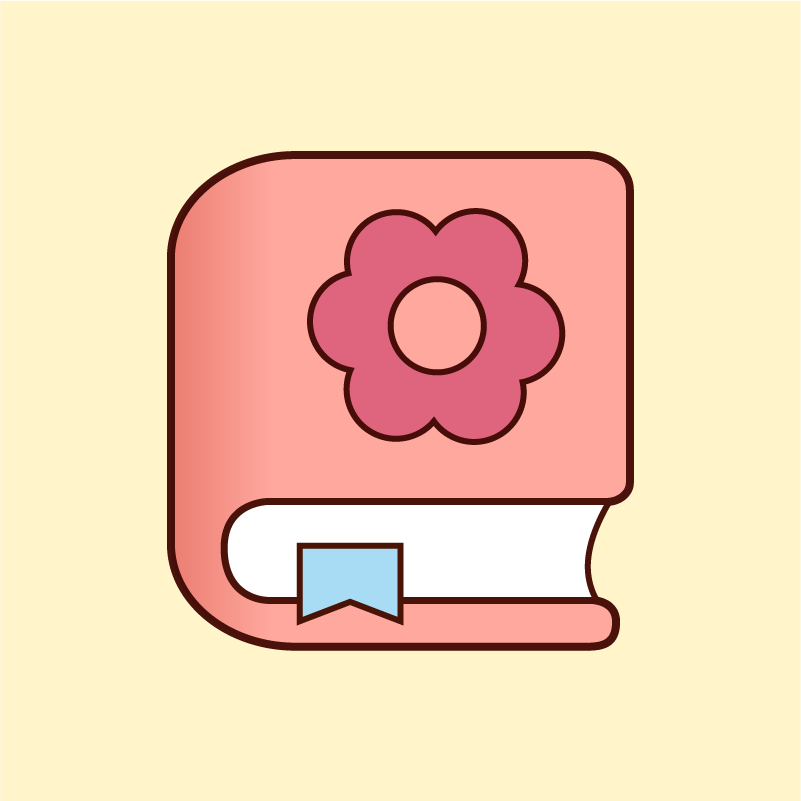
Name: Hydrangea
Latin: Hydrangea macrophylla
Origin: Asia
Plant height: 30 - 60 cm
Reproduction: #Stems
Difficulty level: #Pro
Tags: #Asia #Hydrangeamacrophylla
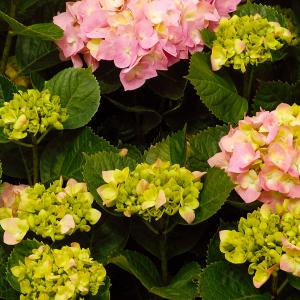
Latin: Hydrangea macrophylla
Origin: Asia
Plant height: 30 - 60 cm
Reproduction: #Stems
Difficulty level: #Pro
Tags: #Asia #Hydrangeamacrophylla

1
0
Colorful
2016年06月14日
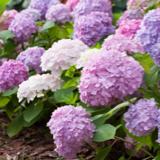
#八仙花--绣球 Golden Crane (直译“黄金鹤”)属于Hydrangea Angustipetala 伞型绣球/ 狭瓣八仙花。花色:白色/奶油色/浅黄绿,花型:lacecap(花边绣球或平顶绣球,直译过来是“蕾丝帽”,好形象)在晚春会有非常浓郁的香气。像茉莉花似的香味会蔓延到整个花园里。并且它是绣球花里开花开得最早的。

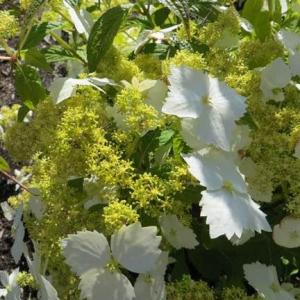
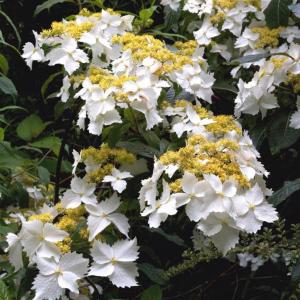



4
0
Colorful
2016年06月14日

#八仙花 八仙花(学名:Hydrangea macrophylla)又名绣球、紫阳花,为虎耳草科八仙花属植物。八仙花为落叶灌木,小枝粗壮,皮孔明显。叶大而稍厚,对生,倒卵形,边缘有粗锯齿,叶面鲜绿色,叶背黄绿色,叶柄粗壮。八仙花原产中国和日本。喜温暖、湿润和半阴环境。八仙花的生长适温为18~28℃,特别雨季要注意排水,防止受涝引起烂根。八仙花为短日照植物,平时栽培要避开烈日照射,以60%~70%遮荫最为理想。土壤以疏松、肥沃和排水良好的砂质壤土为好。但土壤pH的变化,使八仙花的花色变化较大。为了加深蓝色,可在花蕾形成期施用硫酸铝。为保持粉红色,可在土壤中施用石灰。


3
0
妖怪花园:一直以为绣球随便种的!原来也这么讲究
张登发775520:花团锦簇!好赏心悦耳,舒坦





